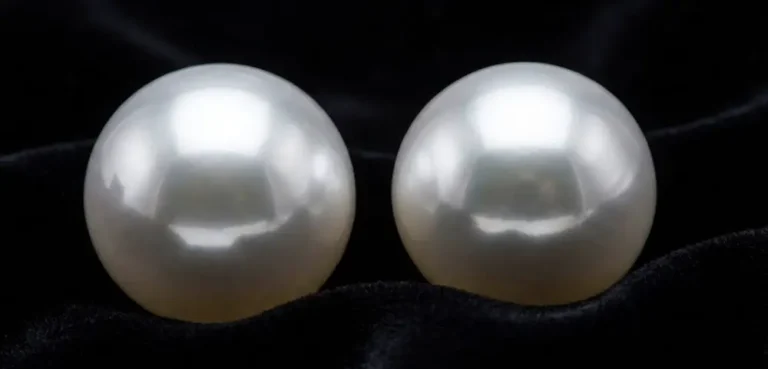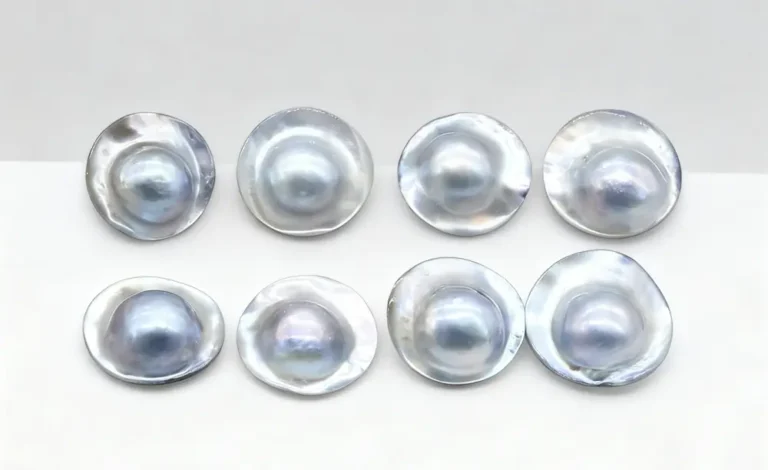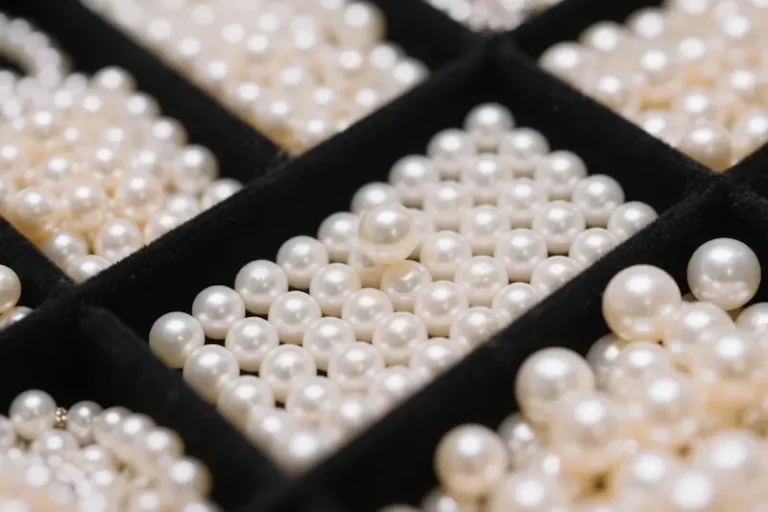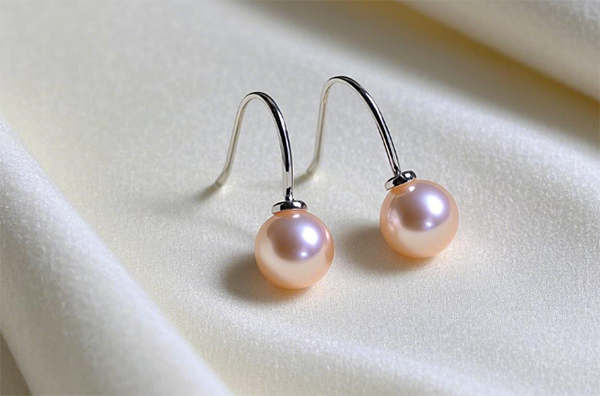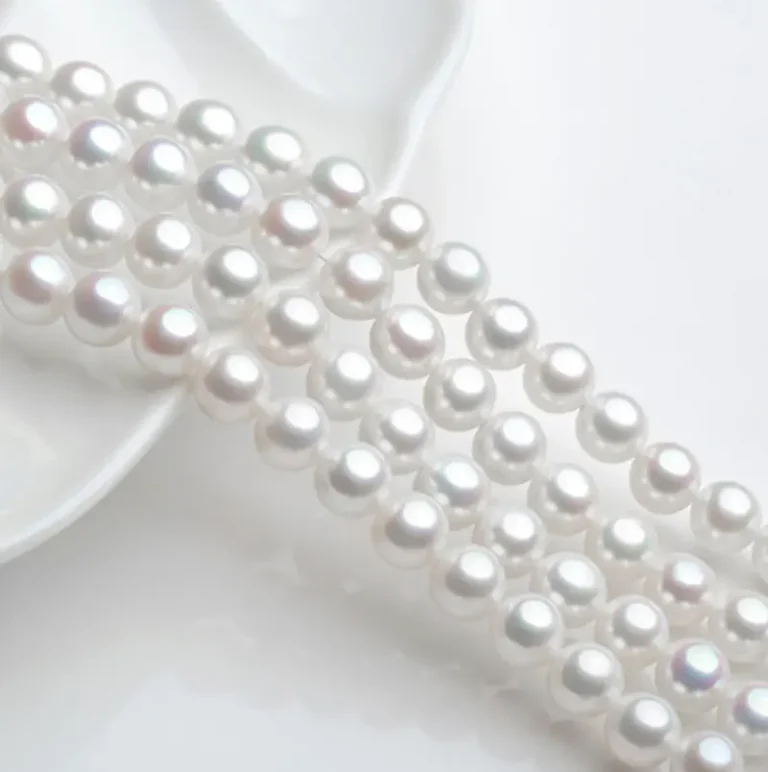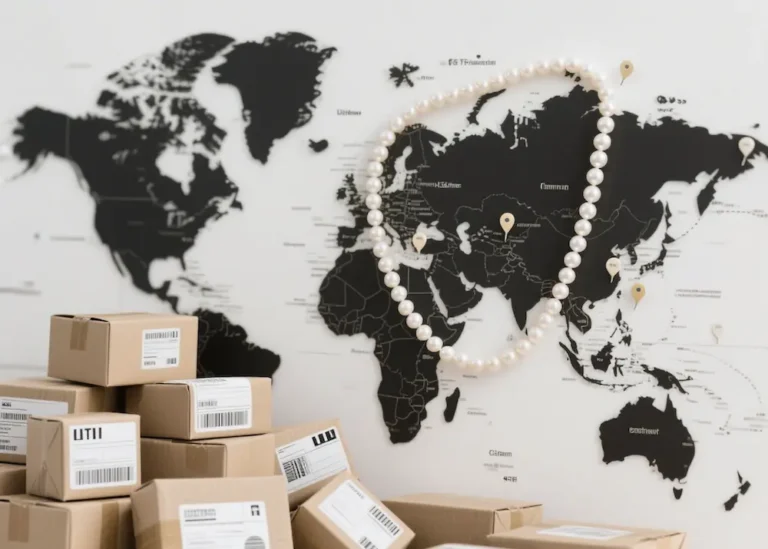Where do freshwater pearls come from? You are not alone in this! If you into jewelry, everyone wonders where that beautiful gemstone came from and that it is of course the answer. I’ll start with something most dealers won’t tell you, especially if you’re into pearl jewelry.
Where do freshwater pearls from is a question that many people have. You can appreciate these stunning gems even more if you know where they came from.
1. Where Do Freshwater Pearls Come From
Quick fact: Freshwater pearls are all cultivated in freshwater mussels. 95% of all freshwater pearls come from China.
So, where do freshwater pearls come from? The majority of these pearls are cultivated in specific freshwater environments.
While there are other countries like Japan and the United States that cultivate freshwater pearls, China is the dominant producer, supplying the majority of the world’s freshwater pearl market.
When exploring where do freshwater pearls come from, understanding China’s dominance requires looking at geography and history. China’s vast network of freshwater lakes, rivers, and specially constructed pearl farms creates the perfect environment for freshwater mussel cultivation. The Yangtze River basin is especially great because it offers just the right environment: the water temperature doesn’t fluctuate much, it has the necessary minerals, and the water quality is really good.
The provinces of Zhejiang, Jiangsu, and Anhui are the primary pearl-producing regions. These areas have been perfecting freshwater pearl cultivation techniques for over 700 years, dating back to the Song Dynasty. Because they have a long history working with pearls, and they’re also using modern technology, that’s why Chinese freshwater pearls are reliably good quality without costing a fortune.
2. My Personal Pearl Journey
So, where do freshwater pearls come from? The majority of these pearls are cultivated in specific freshwater environments. Our company has more than 10,000 acres of freshwater pearl farms in China. Due to advancements in technology, freshwater pearl farming has become more efficient and sustainable.
What I saw:
- Massive freshwater lakes
- Thousands of mussels
- Modern farming techniques
- Incredible quality control
- Combining green and sustainable concepts
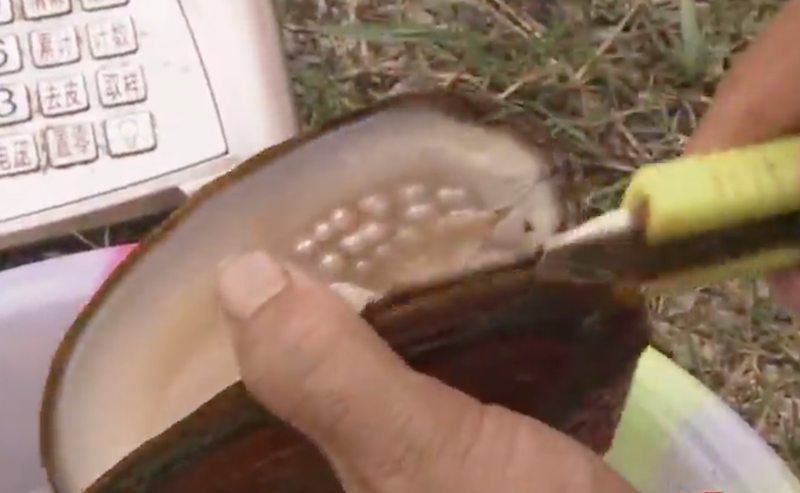
3. The farming process of freshwater pearls
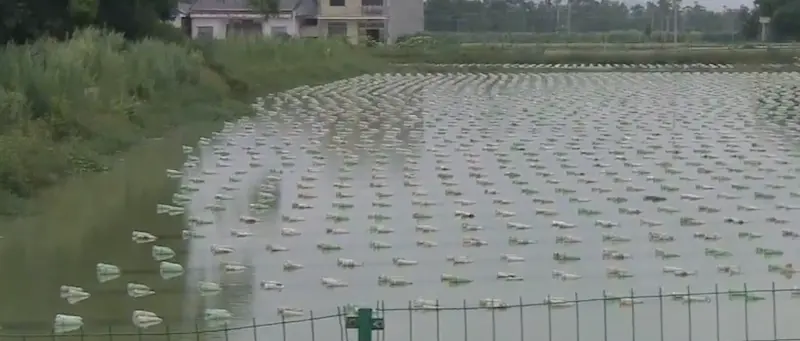
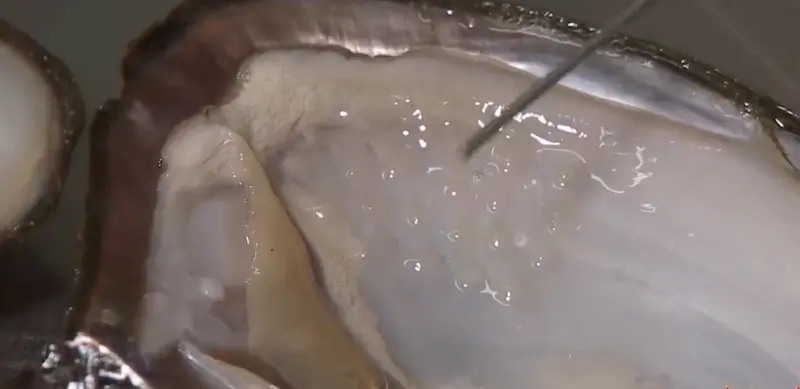
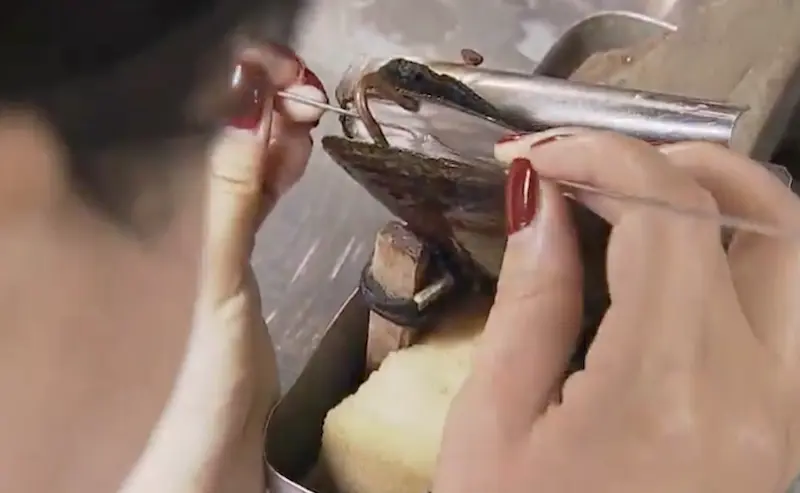
This is proper interesting:
- Mussels get prepped: Healthy mussels, often of the species Hyriopsis cumingii, are carefully selected for their size and ability to produce high-quality pearls.
- Tissue inserted (no bead needed): A small piece of mantle tissue from a donor mussel is surgically implanted into the host mussel. This tissue serves as an irritant, causing the mussel to produce nacre around it to protect itself.
- It takes months, even years: The longer a pearl chills inside the mussel, the bigger and shinier it gets.
- Harvest time! When the pearls are ready, they’re carefully taken out – often by hand, to make sure they’re top quality.
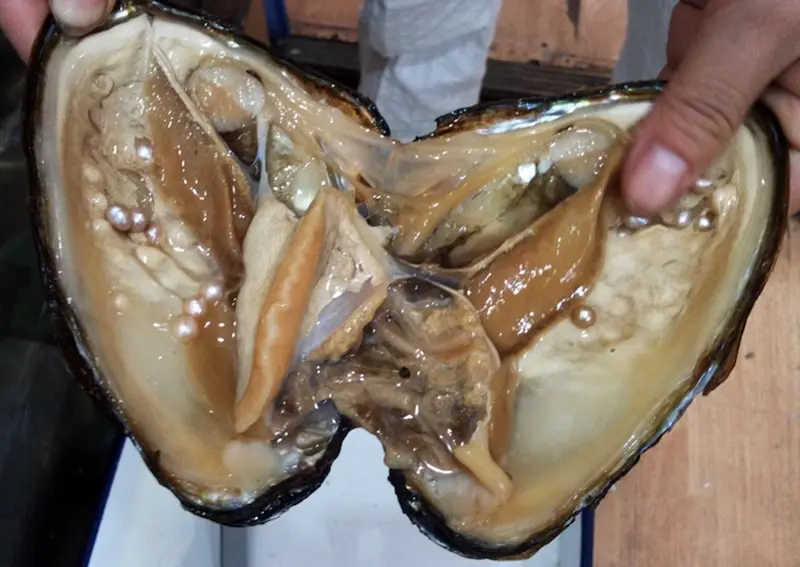
Where do freshwater pearls come from isn’t just about location – And it also has to do with the environmental conditions. Water temperature is a big factor in how nacre (the pearl’s shiny coating) develops. Ideally, you need temperatures between 15-25°C (59-77°F) because that’s when the mussels can produce nacre at the best speed.
For mussels to grow healthy, the water’s pH level needs to stay between 7.0 and 8.5. If the water is too acidic or alkaline, it stresses the mussels, which leads to poor-quality pearls or even kills the mussels. Furthermore, the thickness and sheen of the nacre are influenced by the concentration of calcium carbonate in the water; pearls with higher calcium carbonate tend to be shinier.
The amount of oxygen in the water, how the water flows, and even the changing seasons all play a role in how a pearl develops. That’s why pearl farmers keep a close eye on these things and sometimes even control them in their ponds.
Today’s answer to where do freshwater pearls come from involves sophisticated technology. These days, pearl farms use computers to regulate the water conditions, automatic feeders to ensure the mussels are fed the proper food, and underwater cameras to monitor the mussels’ health. It’s quite sophisticated!
To improve their yield, pearl farmers now use DNA testing to pick the best mussels for breeding. In order to assess the pearls’ quality without prematurely opening the mussels, they also employ X-rays. To monitor various mussel groups dispersed across expansive farming regions, some farms even employ GPS.
Modern freshwater pearl farms are able to consistently produce pearls of superior quality that retain their inherent beauty thanks to all of these new technologies. It’s a fantastic illustration of how human ingenuity and nature can coexist.
4. How to choose freshwater pearls
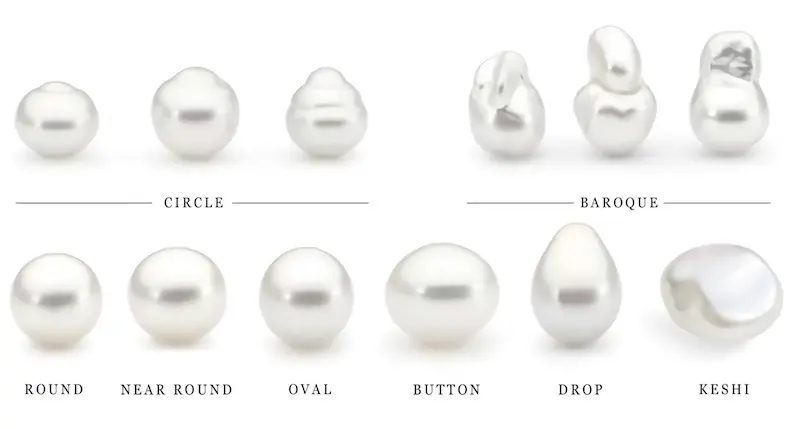
Here’s some advice when you’re picking out freshwater pearls:
- Luster: Look for the shine! A good pearl should have a bright, noticeable reflection.
- Shape: Do you like your pearls perfectly round, or do you prefer the interesting shapes of baroque pearls? It’s totally up to you!
- Size: Freshwater pearls come in all sorts of sizes, from tiny little ones (2mm) to pretty big ones (over 15mm). Pick a size that suits your style.
5. What are the advantages of freshwater pearls?
- Lots of choices: You get so many options! Freshwater pearls come in all kinds of shapes and sizes, from classic round ones to those beautifully quirky baroque shapes.
- Easier on the wallet: They usually cost less than saltwater pearls, which is always a plus!
- They go with everything! Dress them up for a fancy wedding or wear them casually to elevate your everyday style. They’re so versatile.
Common Myths I Keep Hearing
Let’s bust these:
❌ “All good pearls are saltwater”
✅ Some freshwater pearls outshine saltwater ones
❌ “They’re all fake”
✅ They’re real, just cultivated
❌ “They don’t last”
✅ With proper care, they last generations
Care Tips That Actually Work
Keep your pearls prime:
- Last on, first off
- Wipe after wearing
- Store separately
- No harsh chemicals
6. Investment Potential
A lot of people wonderwhere do freshwater pearls come from, especially when they’re thinking about investing in them.
Here’s the truth:
- Quality freshwater pearls appreciate
- Rare colors gain value
- Large sizes become investments
Where do these freshwater pearls actually come from? Well, they’re growing inside freshwater mussels. These days, China produces most of the freshwater pearls you see on the market.
Climate change is making it tougher in the usual places where pearls are grown, so the industry is trying to figure out ways to farm that are more resistant to these changes. Some farms are trying out things like growing pearls in deeper water or using temperature-controlled environments, in order to keep the conditions just right for the mussels.
Looking ahead, we might see pearl farming spreading to new areas. In order to maintain the high quality of freshwater pearls that consumers desire, farmers must adapt to the changing environment.
FAQs About Freshwater Pearl Sources
Q: Why are Chinese pearls cheaper?
A: Mass production, not lower quality.
Q: Are freshwater pearls considered real pearls?
A: Yes, freshwater pearls are real! They are natural gems formed inside mollusks.
Q: Can I find wild freshwater pearls?
A: Yes, but it’s rare and often regulated.
Q: How do farming locations affect quality?
A: Water quality and temperature make huge differences.
Q: Can I wear freshwater pearls every day?
A: Yes, freshwater pearls are durable enough for daily wear, but it’s best to keep them away from perfumes and lotions.
Q: Do freshwater pearls last?
A: Absolutely! With proper care, freshwater pearls can last a lifetime. Just avoid harsh chemicals and store them properly.
Q: Where can I buy high-quality freshwater pearls?
A: Look for reputable pearl suppliers like Xinye Pearl, who focus on quality and craftsmanship.
Q: Are freshwater pearls worth anything?
A: Yes. Many wellknown member pearl enthusiasts incorporate freshwater pearls into their designs because of their excellent value.
At Xinye Pearls, we offer freshwater pearls to suit every budget and style. Take a closer look at our pearl collection and contact us to get the best wholesale price.
Knowing where do freshwater pearls come from can enhance your understanding and appreciation of these gems. If you’re still wondering where do freshwater pearls come from, feel free to reach out for more information.

